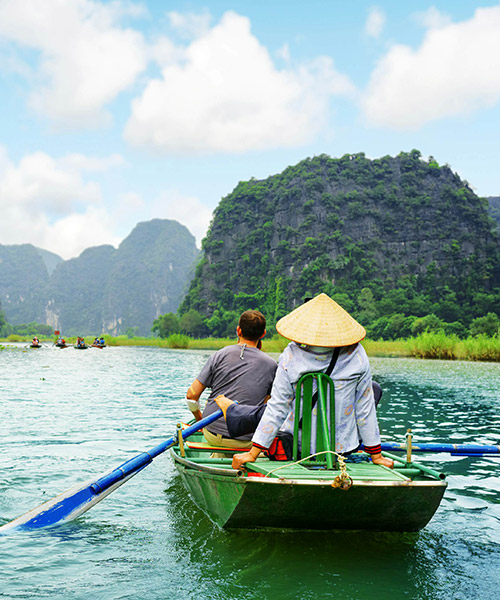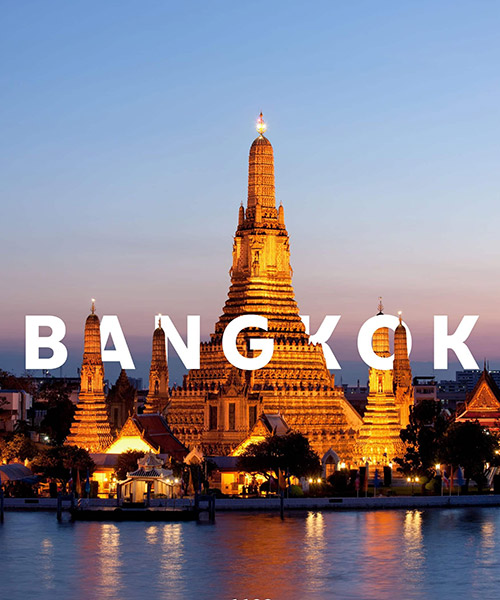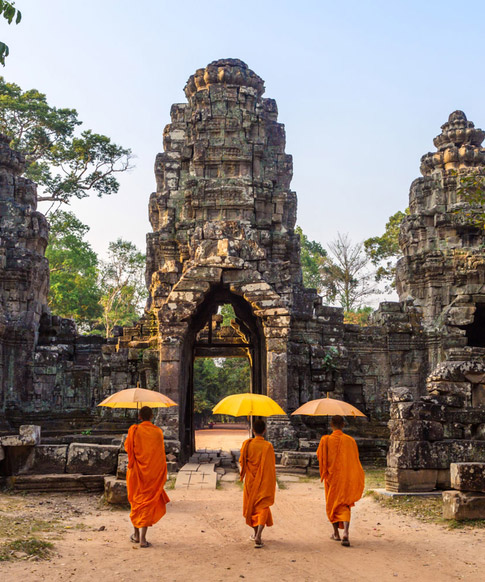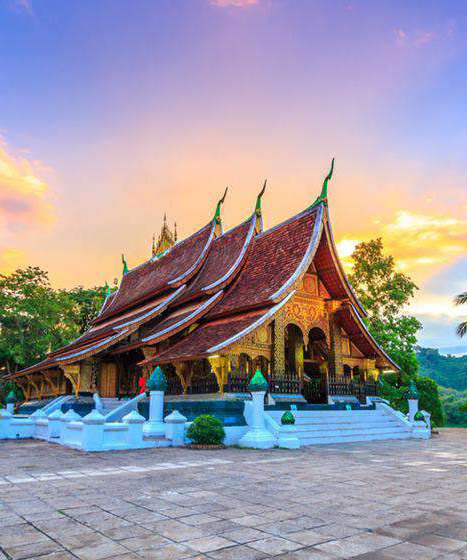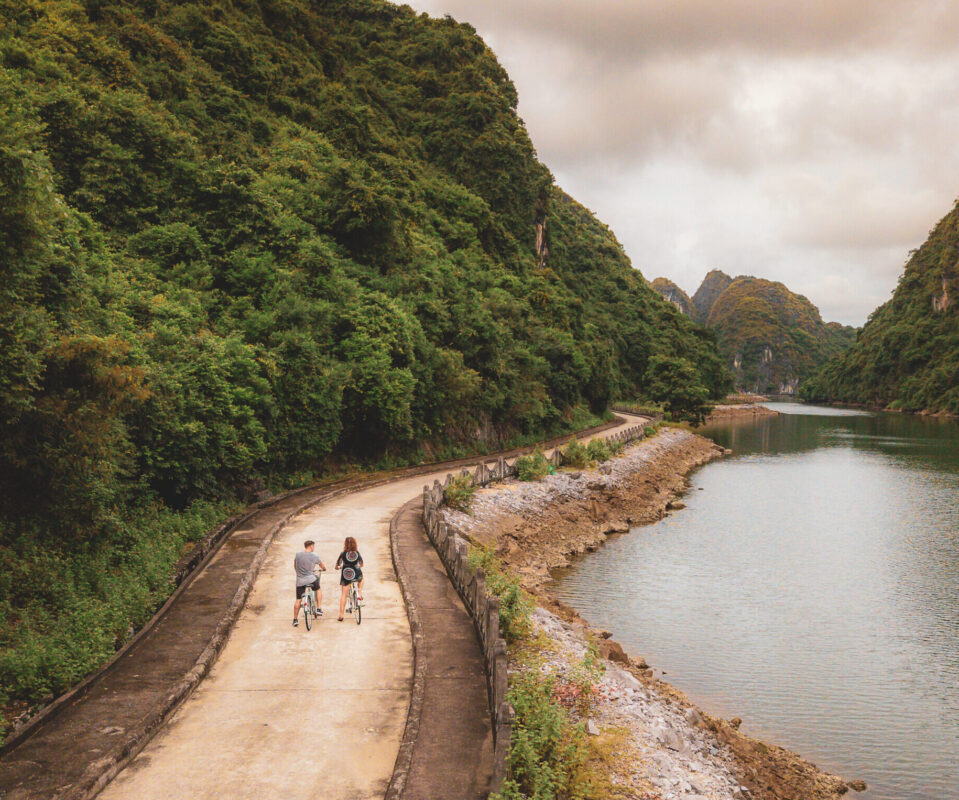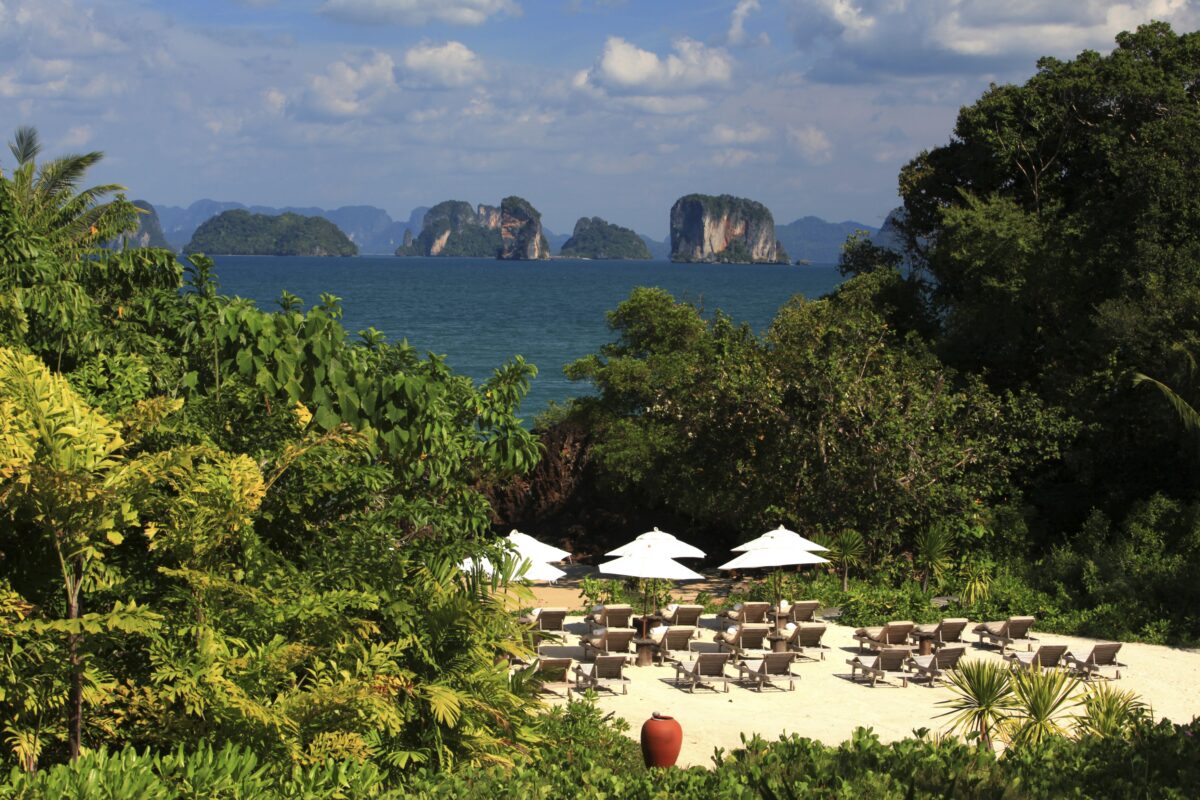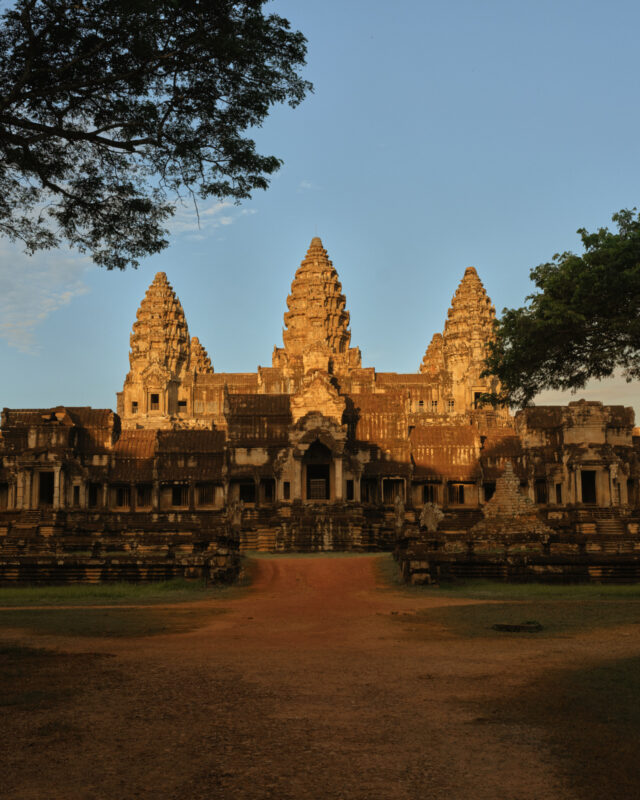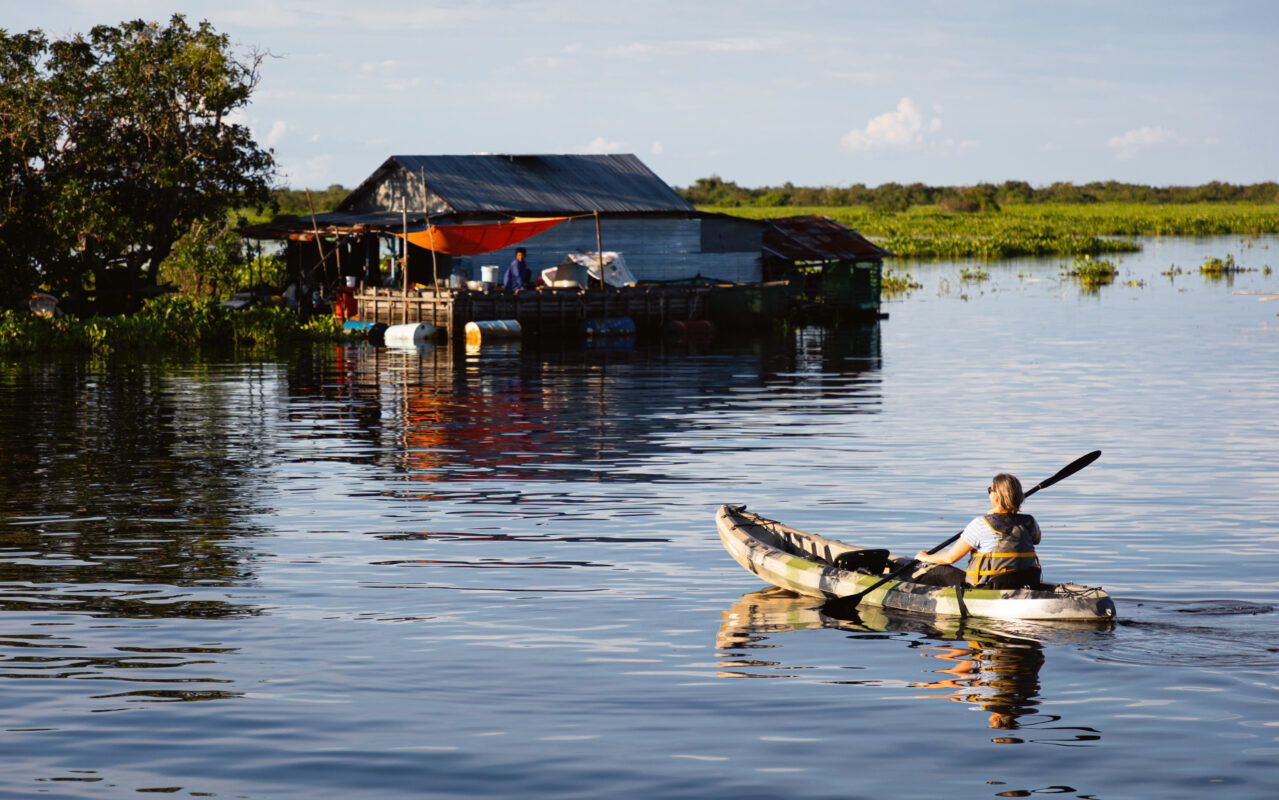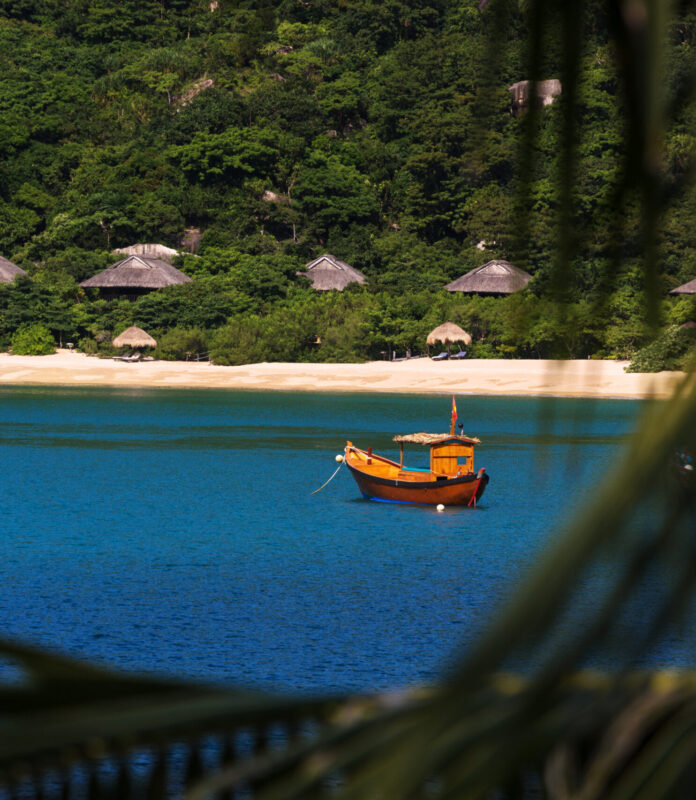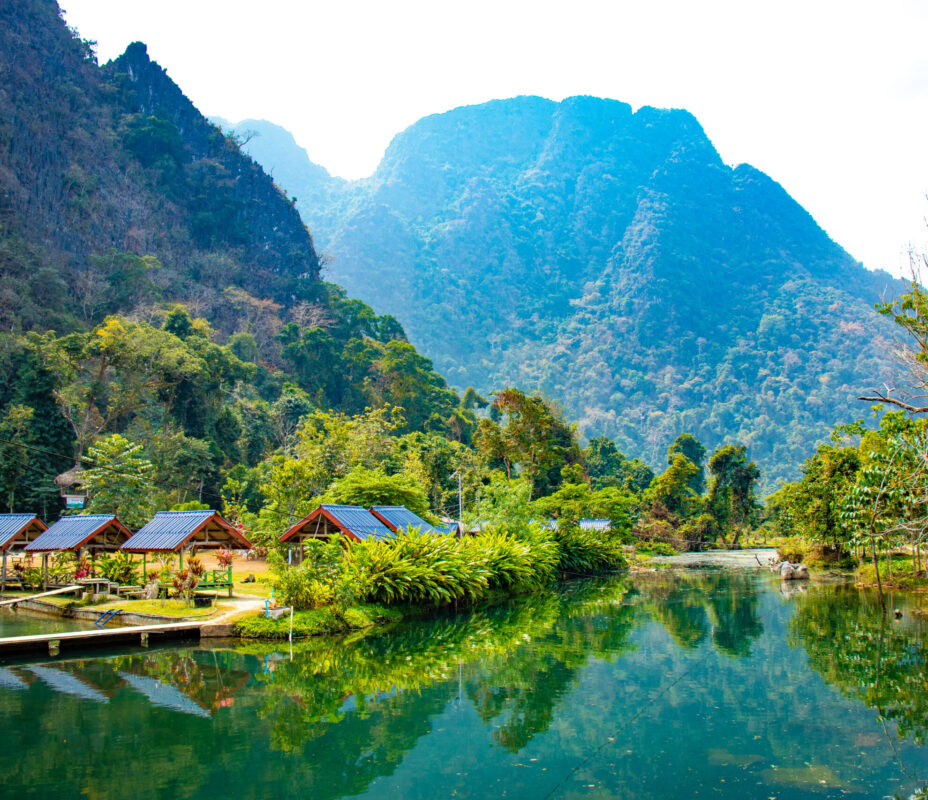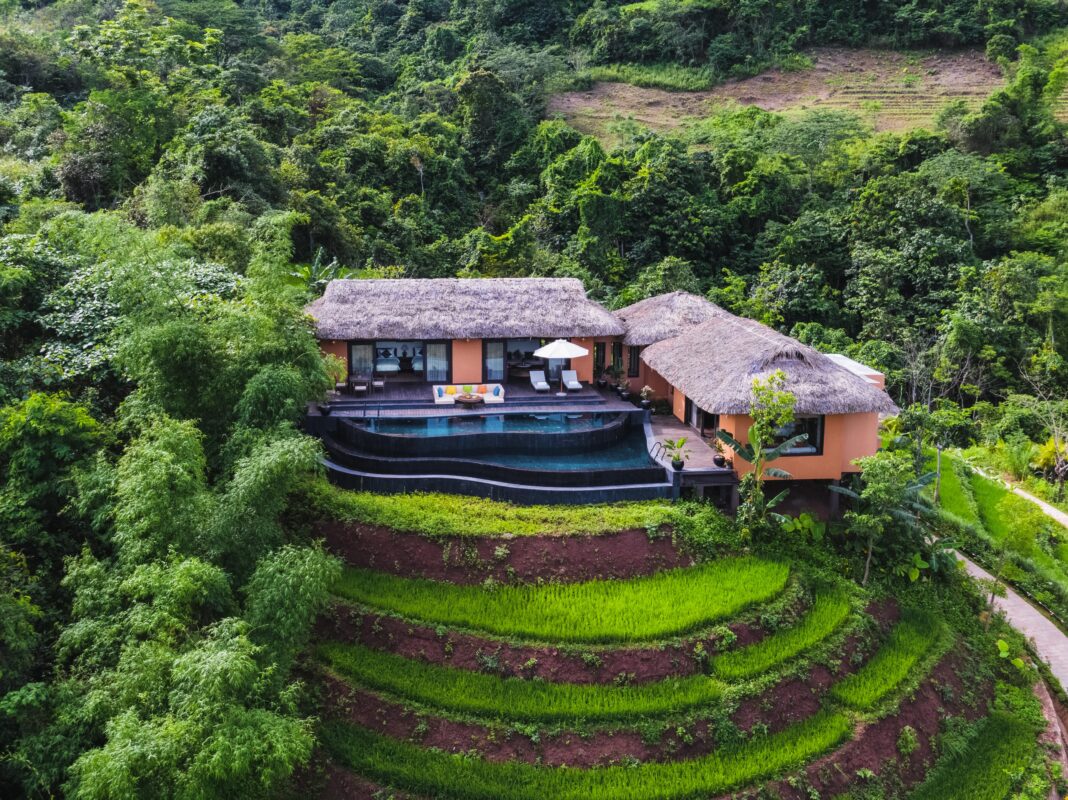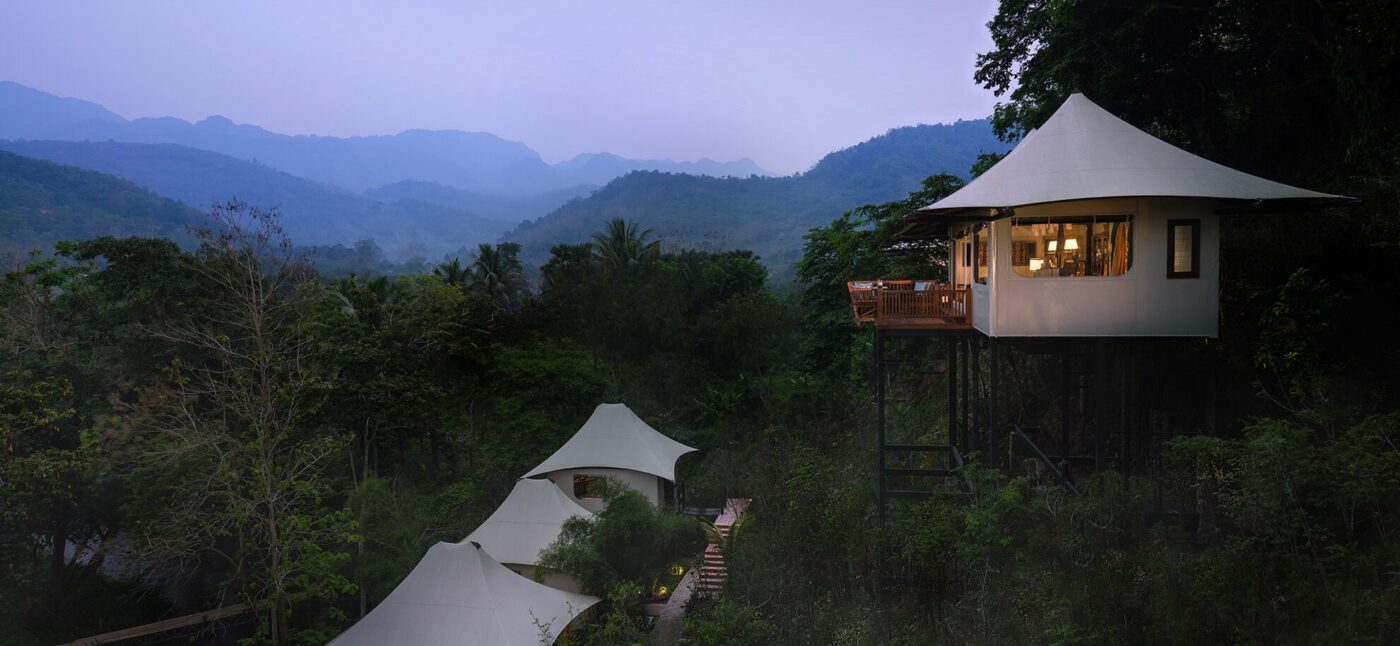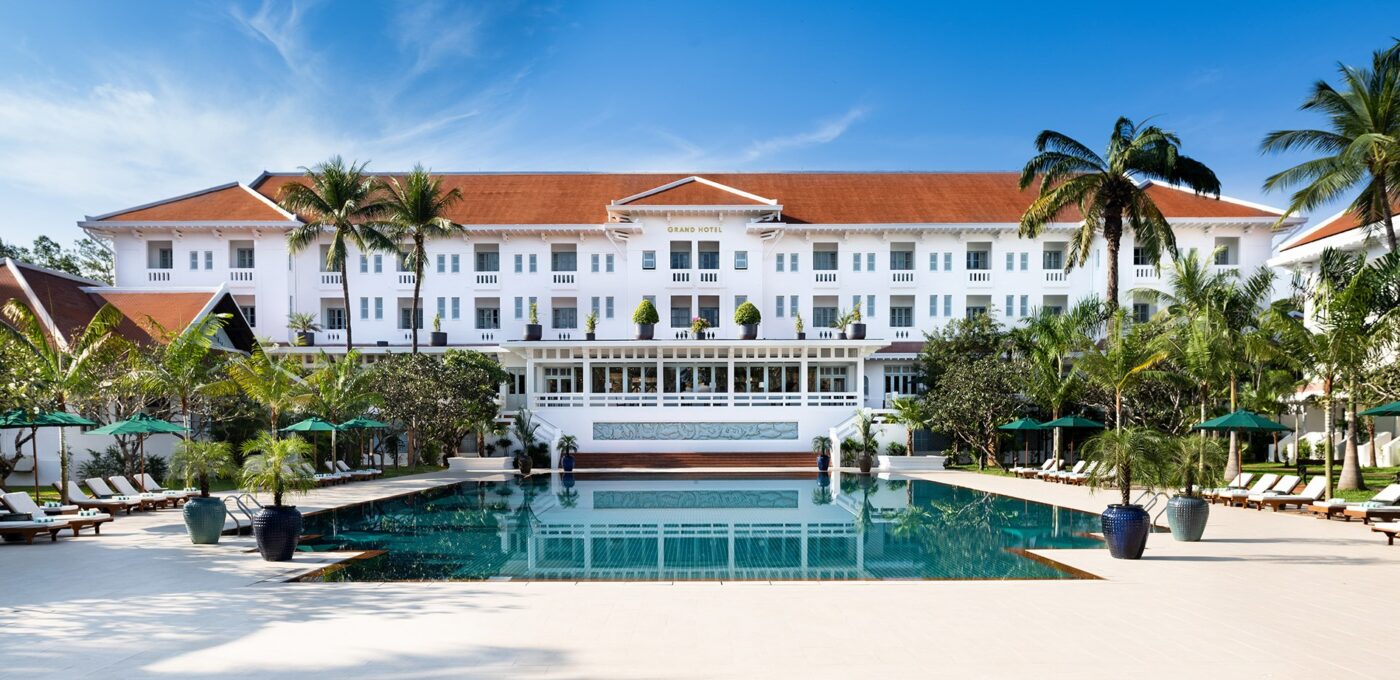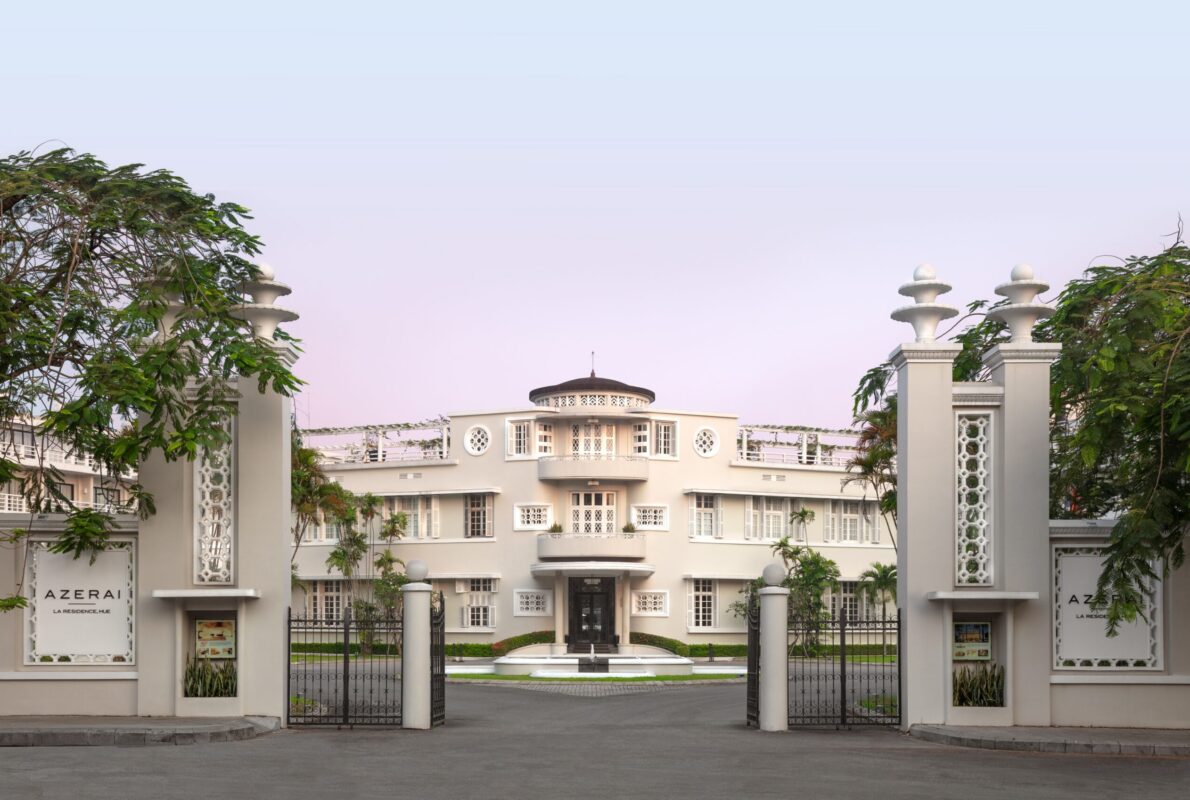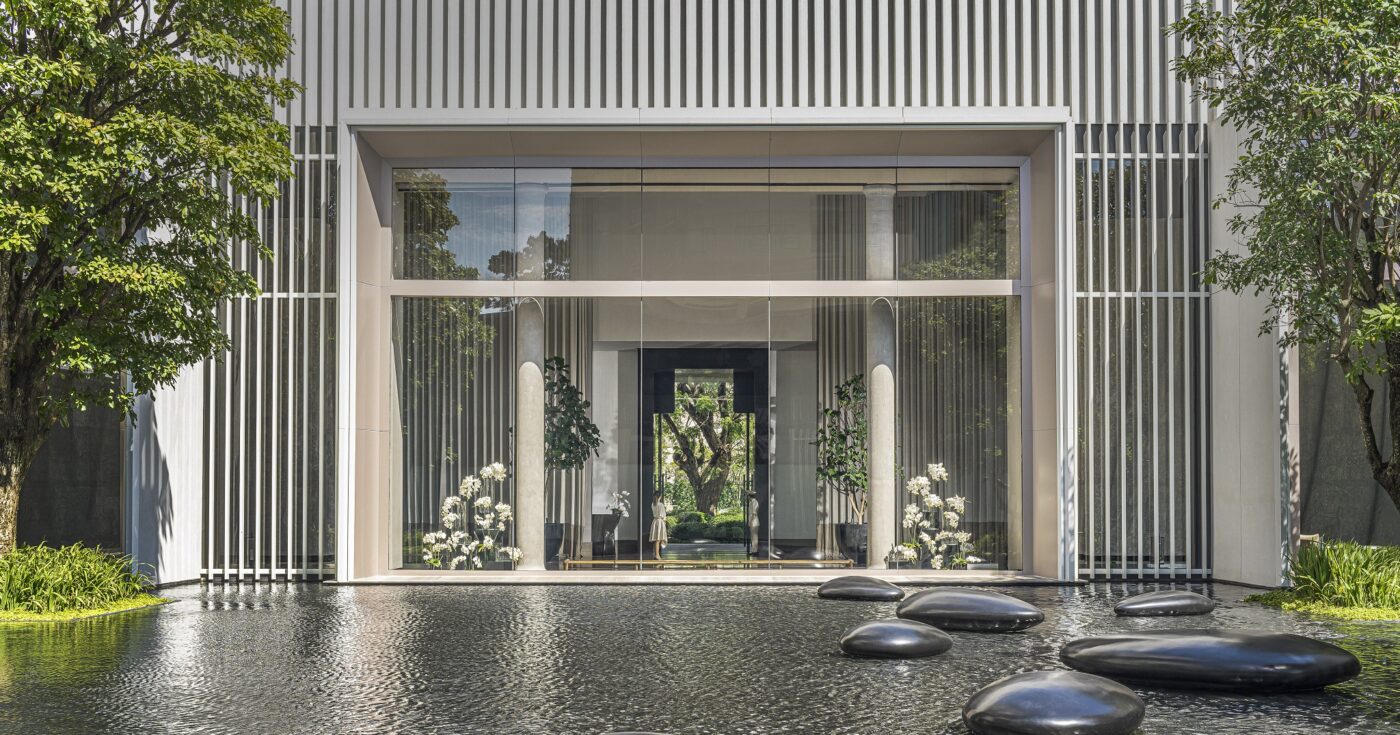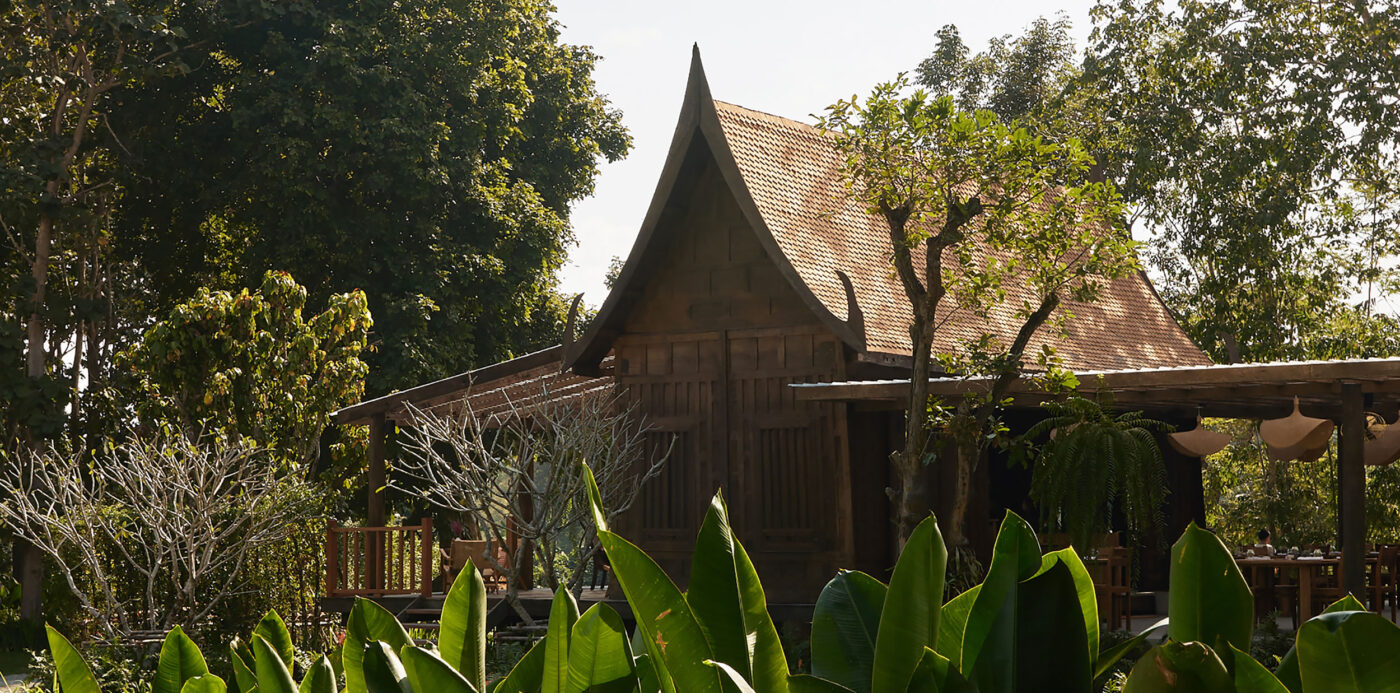Discover the public holidays and festivals celebrated throughout Thailand
Almost all Buddhist holidays and festivals in Thailand are based on the Thai Lunar Calendar which is rather different from that of the internationally recognised Gregorian/Solar calendar, and is technically 543 years ahead! This is because they follow the moon cycles, where a complete cycle from the new moon to the full moon is 29 and a half days, so their months alternate between 29 and 30 days. Also, the first month according to their calendar usually falls in December, however, they do not class this as the beginning of the new year as they now celebrate the new year on 1st Jan with the majority of the world.
To explain more about the Thai Lunar Calendar’s months, all months falling on an odd number (for example, August is the 9th month according to the Lunar calendar which begins in December) so would have 29 days, 15 days of a waxing moon (where the visible surface area is increasing) also known in Thai as “keun” and 14 days of a waning moon (where the visible surface area is decreasing) also known in Thai as “raem”. The next month would have 30 days, an equal 15 days of waxing and 15 days of waning.
The dates shown below for each festival indicate the dates they would appear on the Gregorian calendar.
Chinese New Year: Between 21st Jan – 21st Feb
Chinese new year begins at sunset on the day of the second New Moon following the winter solstice – 21st December – so can begin anytime from January 21st through to February 21st. Thailand has a large Chinese population, particularly in areas such as Bangkok and Phuket. Therefore, Chinese New Year (also known as the Spring Festival) is one of biggest festivals in Thailand. The narrow alleyways of Bangkok’s Chinatown (Yarowaraj) are filled with festivities: dragon and lion dances, parades, firecrackers, lanterns and plenty of excellent things to eat from Chinatown’s famous street food vendors. You can also find Chinese New Year celebrations elsewhere in Thailand, particularly in Koh Samui, Chiang Mai and Nakhon Sawan. For three days, there are massive discounts, promotional offers, and quirky activities like free feng shui advice (which are a set of principles that are meant to help align one’s living space with who they are and what they want). You can even see smaller establishments like street vendors or street shops see significant sales, so you were interested in buying a traditional Chinese fan or intricate Chinese souvenirs, then this is the best time to buy them!
Chiang Mai Flower Festival: Lasts 3 days during first week of February
Also known as the Rose of the North, the Chiang Mai Flower Festival is a celebration of the beautiful flowers in bloom, at the end of the winter season. During the three days of the Chiang Mai Flower Festival the city turns into a profusion of colour with a parade of giant and elaborately decorated flower floats winding their way through town, uniformed marching bands, and dancers donning traditional Thai and local hill tribe dress. The festival has a friendly and laid-back atmosphere, plenty of street food stalls and manageable crowds making it a fun and relaxed event ideal for everyone.
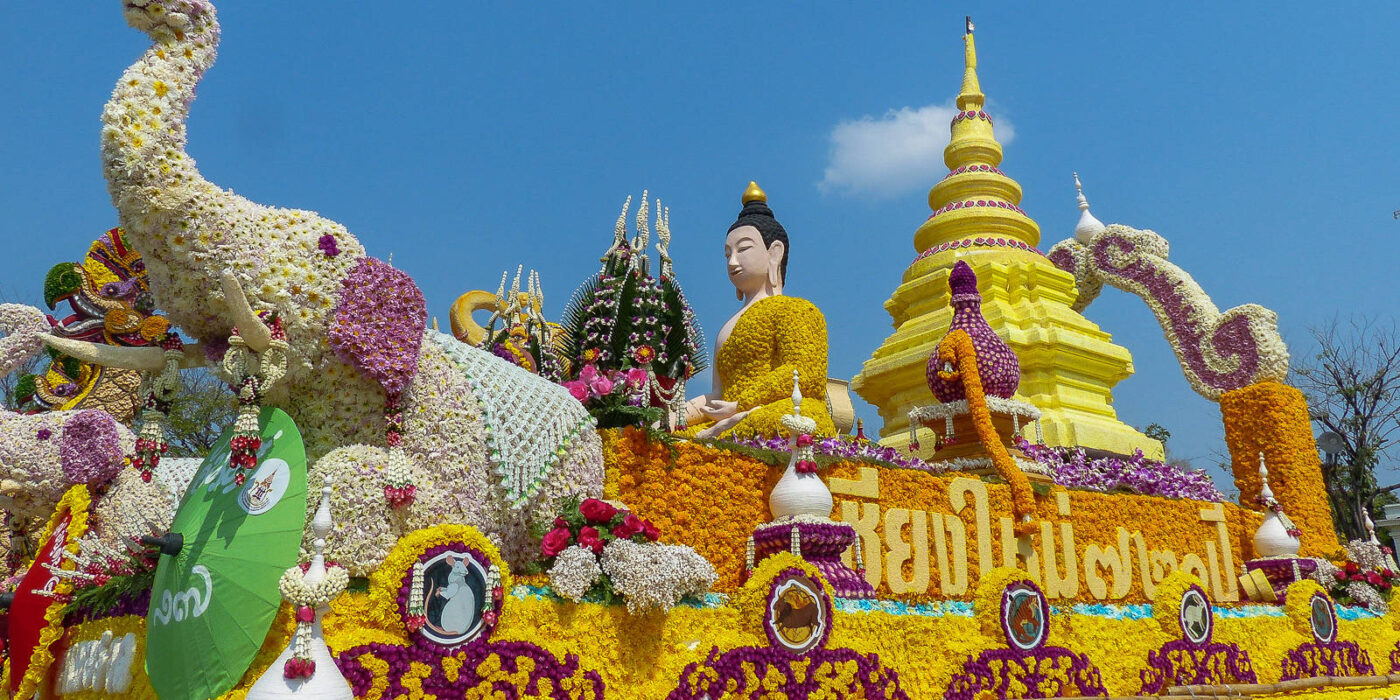
Songkran Festival/Thai New Year: 13th – 15th April
Songkran was the official new year from the late 1800’s up until 1941 in order to synchronise with the Western calendar and still usually fell in April as it followed the Thai Lunar calendar (following the zodiac, where the sun is known to leave the sphere of Aries and enters that of the Taurus, making it the new year). After 1941, Songkran still remained a festival to celebrate the new year but they also celebrate new years eve and new years on 31st Dec and 1st Jan with the majority of the world.
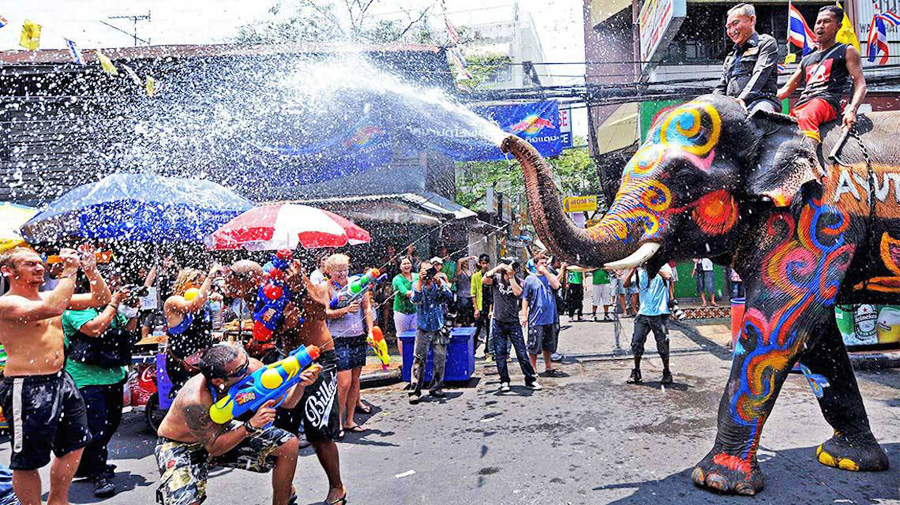
The Thai people believe that water is spiritually purifying: it cleanses you of any bad luck or grievances from the past year, and blesses you with fortune and happiness for the year ahead. It originated with locals collecting water that had been poured over Buddha statues for cleansing. This was then used to bless village elders and family members by trickling it over their shoulders. Although this is still practiced by many people in Thailand during this period, the festival has also adapted to now include a kingdom-wide water fight where anyone and everyone (including tourists) are at risk of getting soaked! Other than the water fight, you are also presented with the opportunity to enjoy traditional Thai performances and know more about the history of Songkran. Other fun-filled activities include beauty contests, carnivals and parades. There are also several traditional foods to enjoy and great local sports activities.
Bun Bang Fai – Rocket Festival: Second week of May
Every year during the second weekend of May, people from South-eastern Issan (located in the Khorat Plateau) gather in the Yasothon Province for the Bun Bang Fai, rocket festival. Going to this festival in Yasothon is a once in a lifetime experience. This ancient festival is a merit-making ceremony which involves firing home-made rockets towards the heavens to captivate the rain gods and hope for a good monsoon season before the crop plantations take place. Just one rocket can weigh over 100 kilograms and fly for over five minutes! In addition to the rocket launching and competition to see which one can fly for the longest, there are parties, a parade, food and cultural performances. However, during the rocket launching competition, any that misfire are disqualified, and its owner is either thrown into a puddle of mud or covered entirely in it. In addition to this being a punishment in good taste, it also serves as a safety function as mud is said to reduce the severity of burns that might have been caused due to the misfire. This reminds the participants and watchers that the festival is not only about fun and games, but it can also get dangerous at times too, so precautions must be duly taken before one participates in the competitions.

Phi Ta Khon Festival/The Ghost Festival: 3 days between March and July
The three days this festival takes place are selected annually by the town’s mediums and can be anytime between the beginning of March to the end of July. The Story of the Phi Ta Khon Festival dates back to a long time ago when Prince Vessantara (who was a Buddha in his past life) went on such a long journey that most of his followers believed he was dead. Surprisingly, one day he returned, alive and in good health. His followers rejoiced, and the celebrations that followed were so strident that it resulted in the awakening of the dead. To celebrate this festival, some men will daub their bodies with mud to represent rice fields, while creative representations of spirits are there to force the ghosts to deliver enough rain for the coming farming season. The good-natured, fun-loving spirits mingle among the crowd, teasing and amusing all who take part in the procession. Spectators and visitors are welcome to join in the fun.
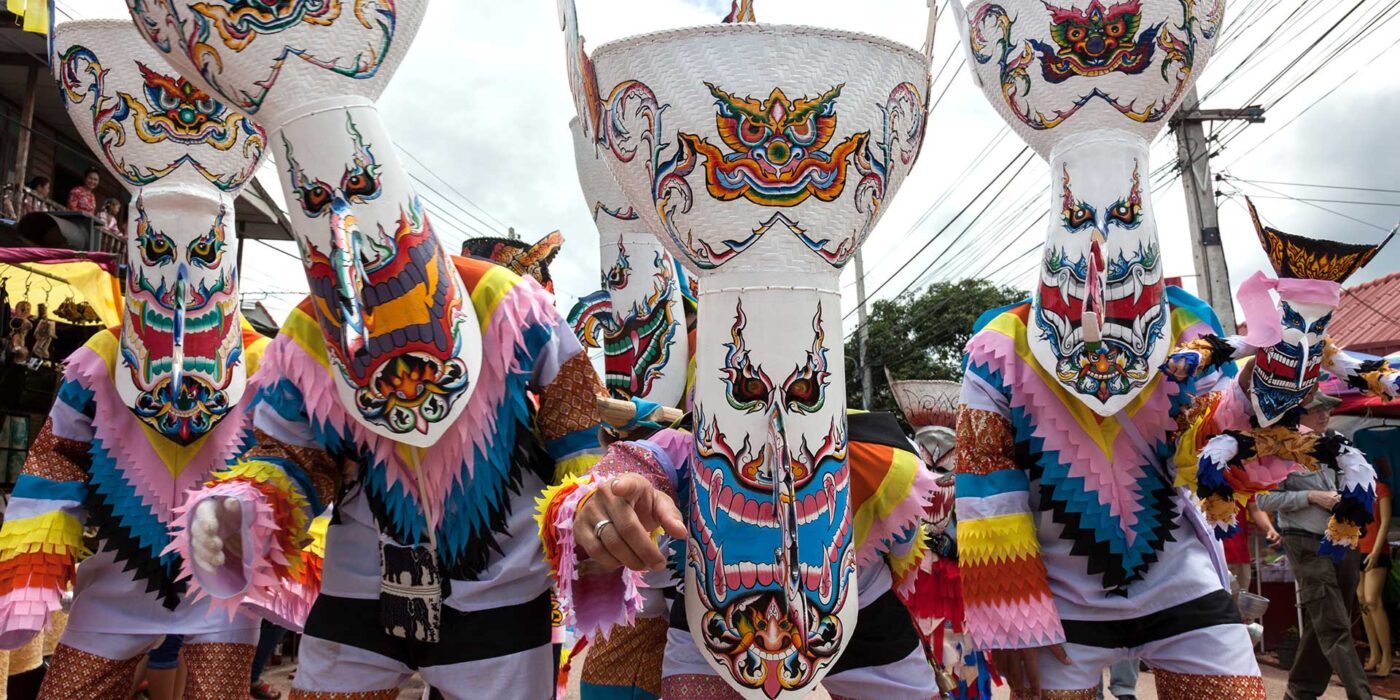
Ubon Ratchathani Candle Festival: Sometime in July or August
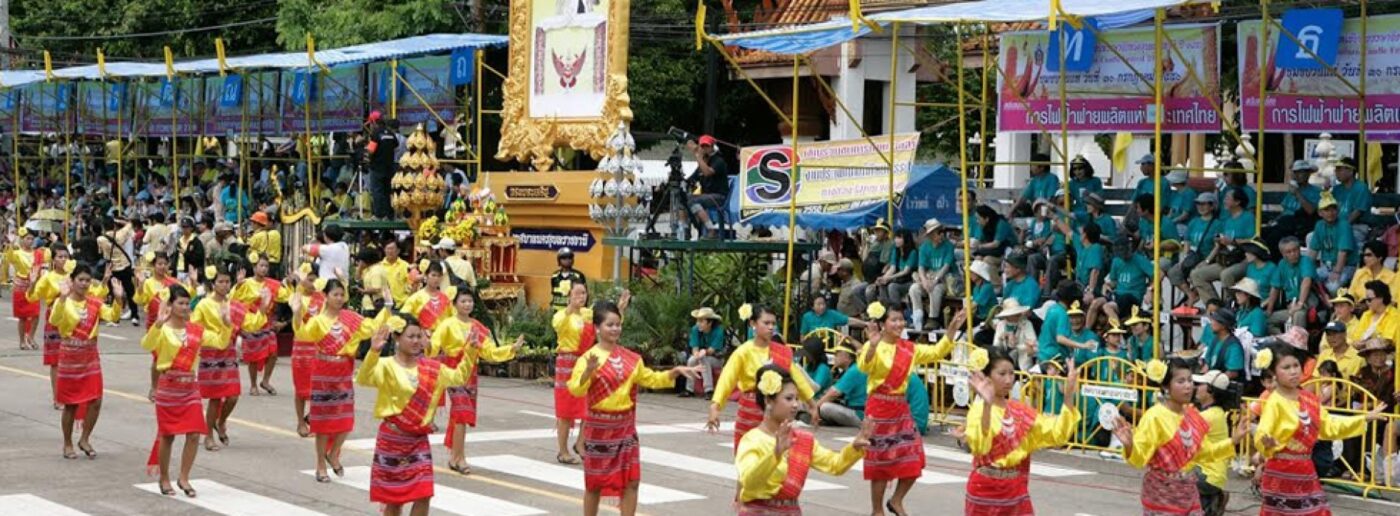
The Festival takes place on the same days as Asahna Bucha and Khao Phansa in July/August. The events are marked by ceremonies and processions in the form of large-scale, colourful parades of magnificent floats with huge, extravagant candlewax sculptures, Thai traditional dance and music. The candle procession traces its roots to the practice of giving Buddhist monks a bundle of small candles along with other basic needs to use during the three-month lent when they can’t leave the temple grounds. Over time, the candles grew more elaborate and it was during the reign of King Rama V in the 19th century that the Candle Festival was established. This festival is a great way for visitors to see the Thais’ devotion to Buddhist tradition as well as getting to visit the open-air market and try a load of different Thai cuisine from the countless of food stalls lining the streets.
Mothers’ Day – Queen Mother’s Birthday: 2th August
The first Mother’s Day/ Queen’s birthday celebration was in 1976. Thai people celebrate this day because Her Majesty Queen Sirikit captured the hearts of Thai people through her devotion towards the welfare and well-being of her people. It is also said that she was also seen as being the mother of all Thai people. On this day, many Thai’s choose to celebrate by donating offerings to monks, treating their mothers to a special meal, as well as giving cards and gifts, such as jasmines – a flower that symbolises purity, gentleness and motherhood in Thai culture. Many schools hold special events for Mothers’ Day and students’ parents are invited to attend. Mother’s day is a public holiday.
Phuket Vegetarian Festival: End of September – Start of October
The Phuket Vegetarian Festival usually lasts for 9 or 10 days and is celebrated in the ninth Chinese lunar month, near the end of September and the beginning of October. This festival is NOT for the feint-hearted. The celebrations can include ritual self-mutilation such as extreme and often bloody body piercing, tongue slashing, burning coal walking, climbing razor-blade-sharp ladders, and other fun activities that demonstrate one’s devotion to gods and ancestors. You can usually find an abundance of stalls all around town which sells only vegetarian and vegan food. This festival comes with its own set of rules that should be followed; do not kill animals, do not eat meat or animal products, do not steal, do not harm others physically or mentally, do not tell lies or swear, do not flirt or touch people of the opposite sex, do not drink alcohol or take drugs, do not gamble, do not wear ornaments, including those made of metal or leather, and do not share utensils, cutlery or food with those who are not obeying the 10 rules.
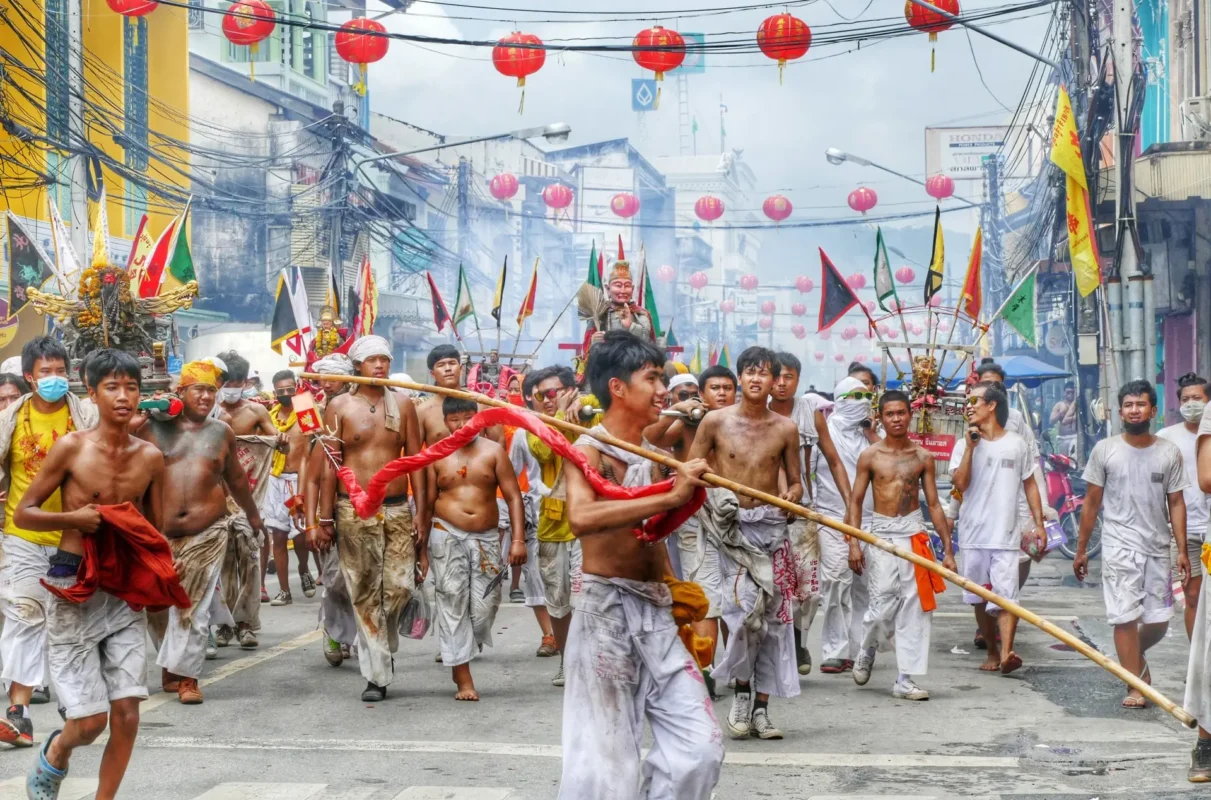
Wing Kwai – Chonburi Buffalo Racing Festival: 2 weeks in October
Usually falling in October (but can sometimes go over into November), the Wing Kwai Festival is held on the day before the full moon night of the 11th Lunar month at the end of Buddhist Lent. The festival started in the 19th century when farmers wanted to express their gratitude to the buffalo who worked with them in the field and who contribute to Thai agriculture. Now, the locals hope that the festival will remind the young people of the importance of the buffaloes to farmers. In preparation for this festival, the buffaloes would that take part in the race would already have to be trained, but they would also receive special care (which includes a particular diet and daily daily massage) and are split into three categories based on their size; small, medium and large. Not only is it the buffalo who has to train, but the race jockey would also have to undergo specialist training as the jockey has to sit on the bare back of the buffalo with a whip and a rein for the 100m muddy track. This race tests the coordination between the rider and his buffalo, as well as measuring the speed of the buffalo and the eligibility of the jockey. The whole race isn’t in vein as there is an award ceremony held after the races where prizes are given for the fastest buffalo and the best-decorated buffalo! Both the local people and tourists are able to derive joy from not only watching the races but from also being able to bet on who they think are going to win.
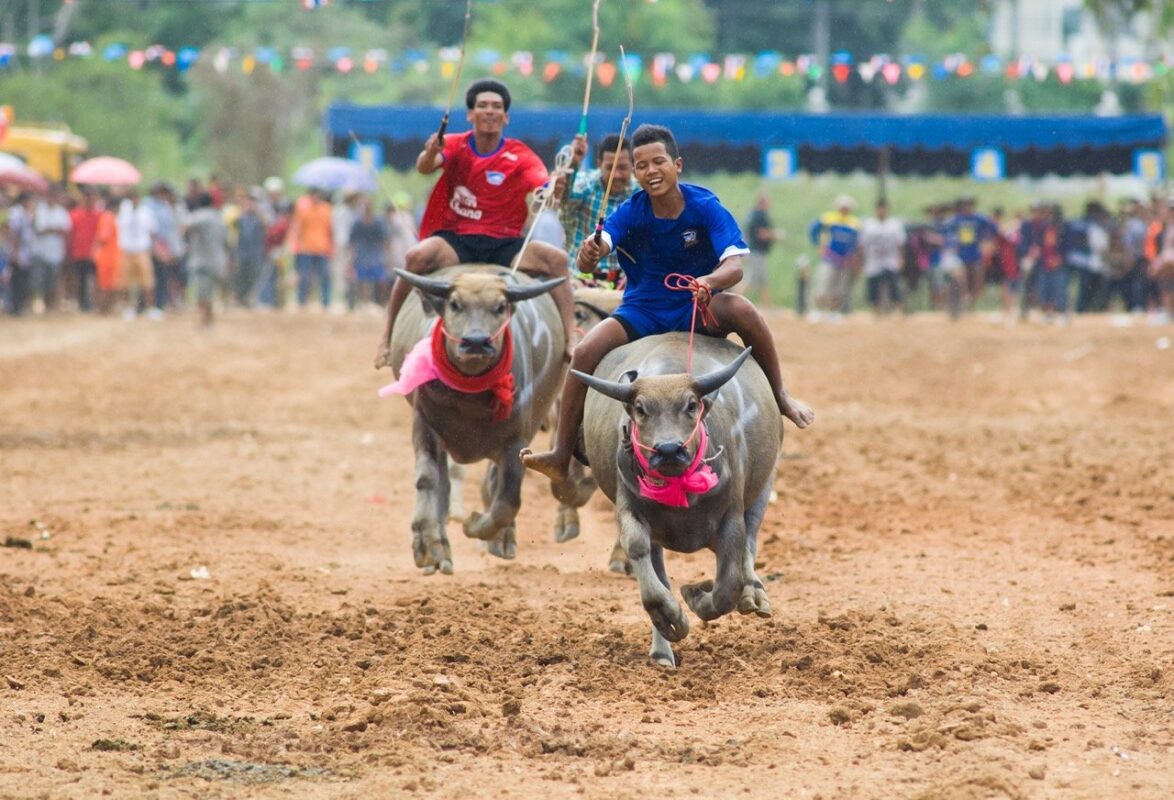
Bang Fai Phaya – Naga Fireballs Festival: October
The Bang Fai Phaya/Naga Fireballs Festival takes place every year in October around the full moon, when mysterious balls of fire rise into sky from a certain 250 km stretch of the Mekong river around Nong Khai, with no scientific explanation as to how. Smokeless, soundless and odourless, the fireballs materialise on the river’s surface as pink, floating spheres, then rise up to heights of 30 metres, before disappearing (the number of fireballs sighted can range from hundreds to thousands). This unexplained phenomenon draws crowds of tourists to witness this magical sight, creating a festival atmosphere. There is a theory however, that these fireballs are made of a combination of nitrogen and methane, which reaches a certain temperature at this time of year, causing a reaction – but this is unconfirmed. Thai folklore says that nagas (serpents) that live in the river release the fireballs to signify the end of Buddhist Lent and call Buddha back down to Earth.
Yi Peng Lantern Festival: Usually falls in November
Maxpixelnet Festival Clifford Loy Krathong Day Light Chiang Mai 2210767
Lasting for 3 days and taking place on the evening of the full moon of the 12th month in the traditional Thai lunar calendar, the Yi Peng Lantern Festival is an ancient festive event tracing back to the ancient Lanna Kingdom (in the late 13th Century). It was traditionally celebrated to mark the end of the monsoon season and the beginning of the cool season. During the Yi Peng Lantern Festival, colourful lanterns are hung outside homes and temples. Sky lanterns are also released during Yi Peng to pay respect to Buddha and as a way for people to symbolically let go of bad memories and make a wish for good luck. The Yi Peng Lantern Festival and the Loi Krathong Festival (detailed below) are generally is celebrated at the same time.
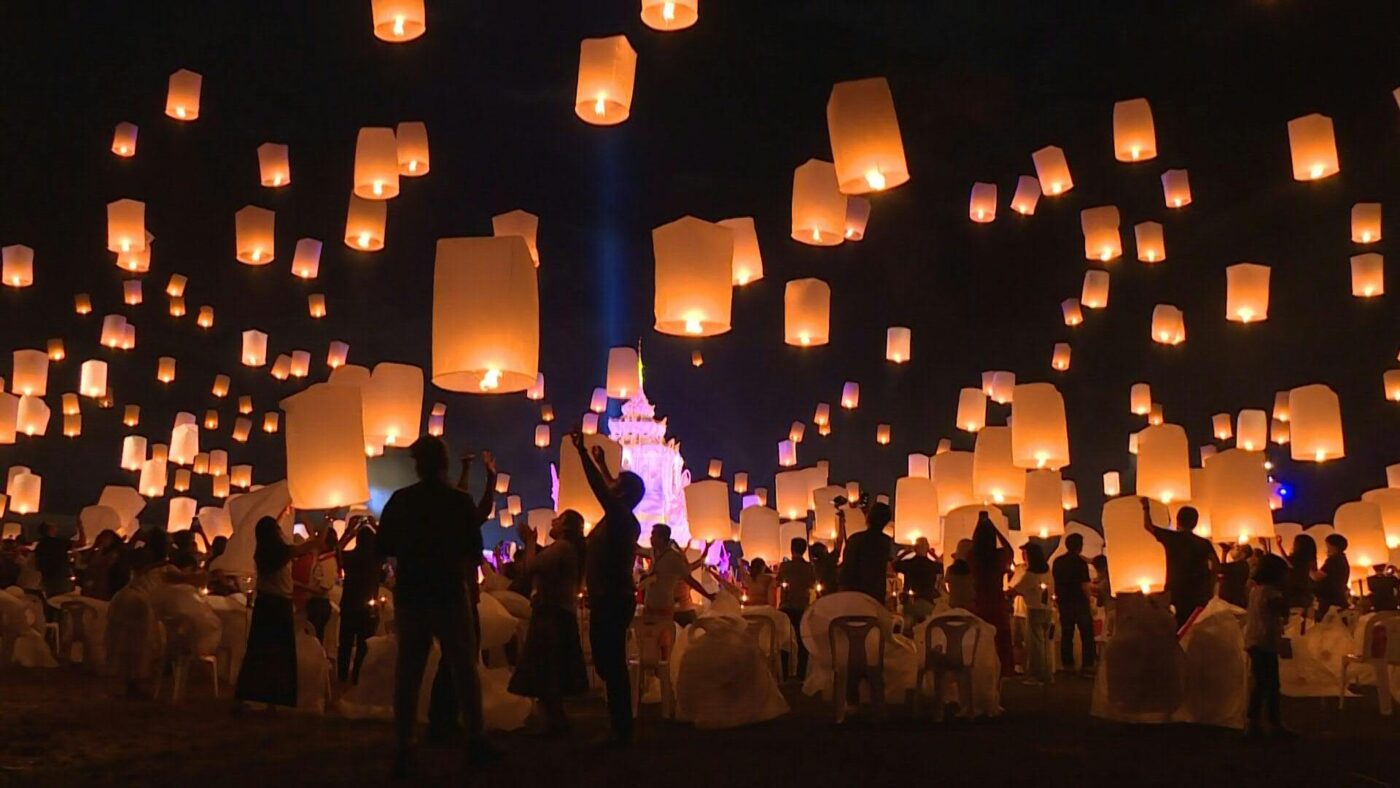
Loi Krathong Festival: Usually falls in November
The Loi Krathong Festival involves water lanterns instead called ‘krathongs’ and are created with a base made of either the trunk of a banana tree or baked bread (which locals claim is better as it provides food for the fish). The bases are then covered with green leaves and adorned with flowers and garlands. A candle and incense stick are placed in the middle and lit before the lantern is launched into the water. The banks of the river are lined with people, crouched down saying prayers and making wishes before pushing their lanterns out into the water; many Thais say releasing the lantern is a way to send their problems away.
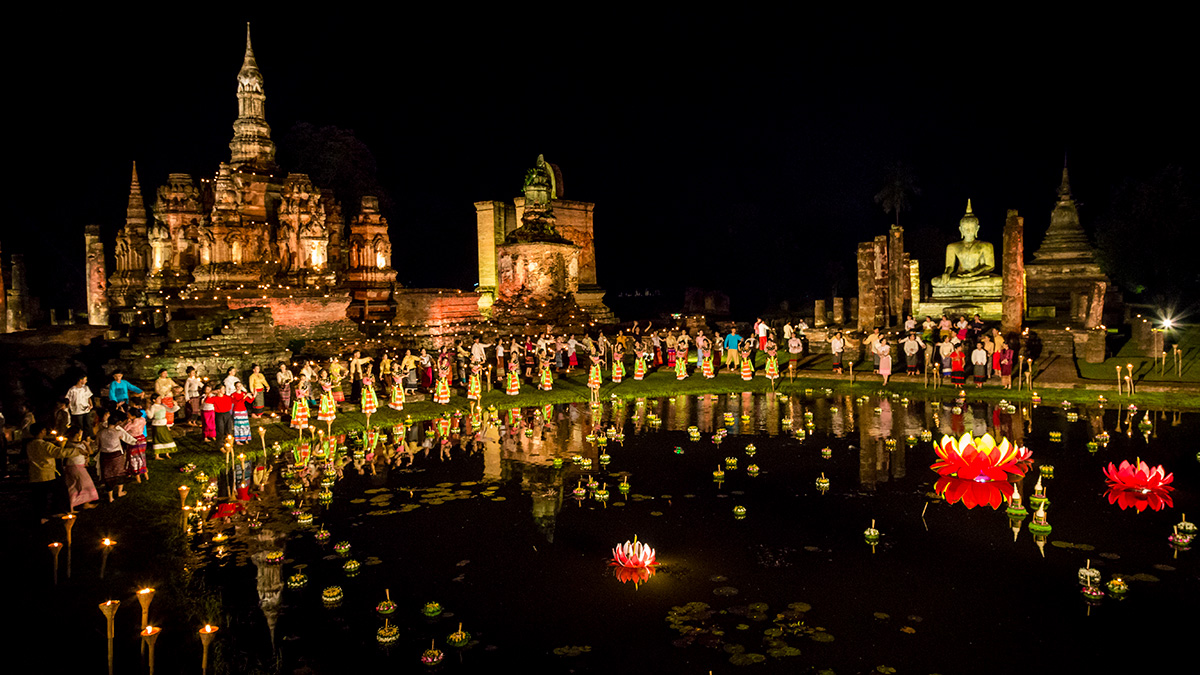
King Rama IX’s Birthday/ Fathers’ Day: 28th July
Similar to Mothers’ Day above, Fathers’ Day is also a public holiday and was previously held on 5th December. This was the birthday of late King Bhumibol Adulyadej (Rama IX), a symbolic father of Thailand, who passed away in 2016. As of 2017, Fathers’ Day has moved to the birthday of the current king, King Vajiralongkorn or King Rama X, on 28th July. On Fathers’ Day, Thai people pay respect to their fathers and grandfathers, often with the gift of a canna flower, a bloom similar to a lily. Despite this change, 5th December has remained a public holiday and has been renamed as King Bhumibol Adulyadej’s Birthday Anniversary, in memory of the beloved monarch. Thais may wear yellow on this day, a colour of celebration and recognition of royalty, or black to commemorate the late king.
New Year’s Eve: 31st December
Although Thai New Year is celebrated with Songkran in April, Thailand still celebrates with the rest of the world at midnight on 31st December with fireworks and parties. Bangkok is where you’ll have the biggest festival atmosphere, with plenty of rooftop bars hosting New Year parties, providing the perfect vantage point to see the capital’s firework displays. Up in Chiang Mai, the celebrations are more traditional, featuring candlelit lantern ceremonies and releasing floating lanterns into the sky. On the island of Phuket, Surin Beach and Kata Beach are transformed into parties on the sand, with barbecues, live music and dancing. Meanwhile, beach destination Pattaya and home of the Full Moon Party Koh Phangan host the wildest of celebrations. One of the best places to be on New Year’s Eve is the Vertigo & Moon Bar Night Bazaar, as you will be able to see streets decked up with lights and restaurants teeming with people whilst also getting to see some of the most amazing sights.


